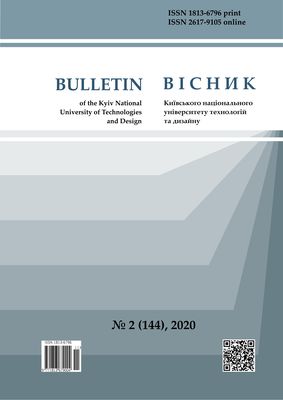EXPERIMENTAL INVESTIGATION OF THE INFLUENCE OF THE GEOMETRY OF THE METAL CASTINGS OF THE DETAILS OF THE ZIPPER ON THE FEATURES OF THEIR PROCESSING
DOI:
https://doi.org/10.30857/1813-6796.2020.2.2Keywords:
casting, spatial motion, separation from gullies, lightning lock, operating mode of the working arrayAbstract
Experimentally investigate the intensity and specificity of the processing of different types of metal castings of the zipper in a tensile machine with complex spatial movement of the working capacity, to obtain the appropriate calculation dependencies to determine the processing time. An experimental study of the separation from the casters of three types of metal castings of the zipper (casting with two, with eight fixed details-cases and outflow with sixteen fixed details by clamps) in a tensile machine with a complex spatial movement of the working capacity by observing the change in the number of machined parts during the process. Further mathematical processing of the obtained results is carried out. The types of castings for which the maximum and minimum technological time are spent in the toughening machine with complex spatial movement of the working capacity are determined. It is established that for processing castings with fixed parts-locks it takes twice more technological time, which is spent to clean the separated parts from the remnants of the wrap and burrs. Compared with conventional rotating shredding machines, using machines with complex spatial movement of the working capacity, you can increase the productivity of this technological operation by almost ten times. The dependences between different types of metallic castings of the zipper and the intensity of separation of parts from them during processing in a caulking machine with a complex spatial movement of the working capacity with providing a waterfall mode of movement and 50% filling the capacity. Appropriate design dependencies were obtained to determine the processing time. Guidelines on the implementation of rational technological parameters in the processing of various types of metal castings of the zipper in a tensile machine with a complex spatial movement of the working capacity. These guidelines can be used at the design stage of technological processes and equipment in the relevant machine-building and light industry enterprises specializing in the manufacture of hardware.

